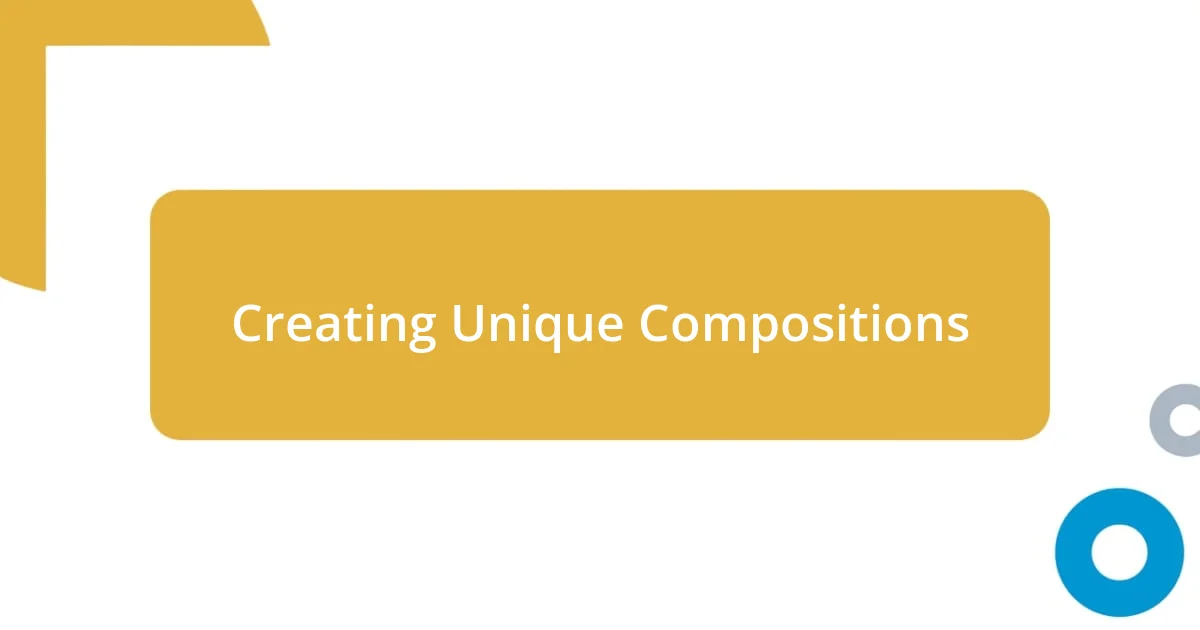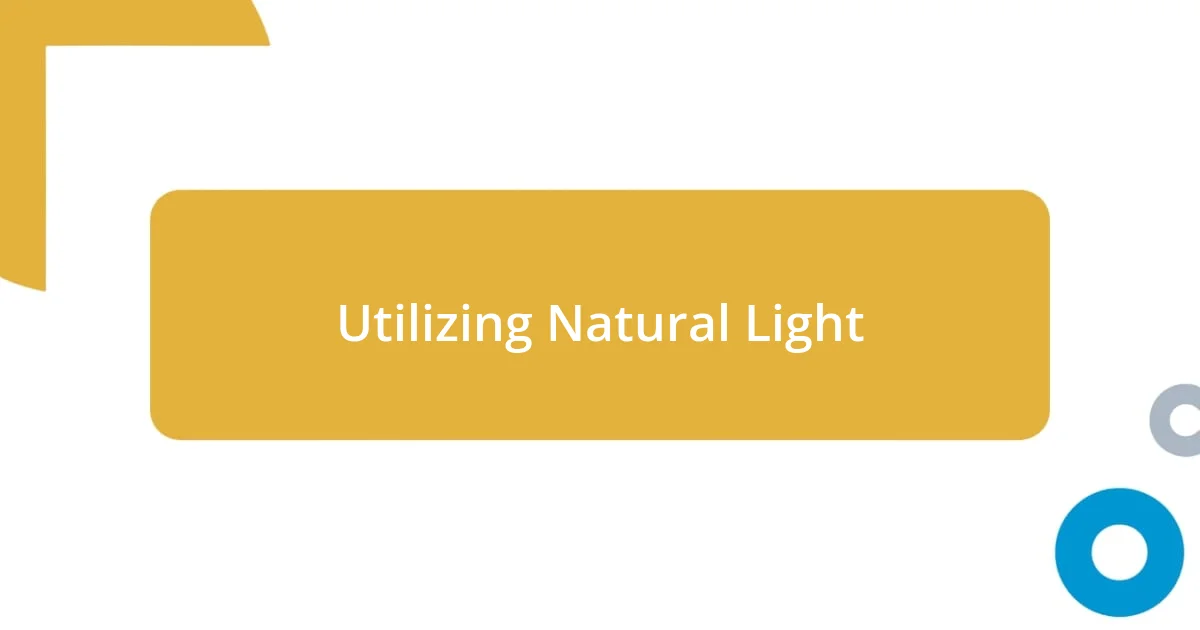Key takeaways:
- Understanding urban landscapes involves recognizing the emotional and historical narratives embedded in the city, enhanced by light and shadow.
- Choosing the right photography equipment, including quality lenses and portable gear, is crucial for capturing vibrant and detailed urban scenes.
- Experimenting with perspectives, utilizing natural light, and effective post-processing techniques can transform ordinary urban photographs into compelling visual stories.

Understanding Urban Landscapes
Urban landscapes are dynamic and ever-changing, full of stories waiting to be told. I remember walking through a bustling city square where the architecture captured the history of the area, telling tales of past cultures mingling with modern influences. Isn’t it fascinating how a single structure can embody decades, if not centuries, of evolution?
As I explored these landscapes, I noticed how the interplay of light and shadow transformed ordinary scenes into extraordinary experiences. There’s a moment just as the sun sets when the city’s edges soften, creating a magical blend of colors. Have you ever paused to appreciate the beauty in that transition? It’s these fleeting moments that ignite my creativity.
In my experience, understanding urban landscapes goes beyond just the physical layout. You’ll often find a tapestry of emotions woven into the streets, from the excitement of a crowded market to the solitude of a quiet alleyway. Don’t you feel a connection to a place when you sense its pulse? Each corner has its own unique vibe, inviting you to immerse yourself in its rhythm.

Choosing the Right Equipment
Choosing the right equipment is essential for capturing the essence of urban landscapes. I remember my first time photographing the city skyline; I had a basic camera and a kit lens. While the results were decent, I realized I missed out on the details and textures that could have brought my images to life. Investing in a good quality lens, like a prime lens, can make a significant difference in achieving those sharp and vibrant results.
When it comes to gear, portability is also a crucial factor. As someone who enjoys wandering through cities, I’ve learned that a lightweight camera setup can help me stay nimble. On one of my photo walks, I opted for my mirrorless camera instead of my DSLR. This choice allowed me to capture spontaneous moments without the extra weight holding me back. It’s amazing how quickly opportunities can vanish in busy urban environments, and being ready at a moment’s notice is key.
Lastly, don’t overlook accessories that enhance your shooting experience. A sturdy tripod can stabilize your shots, especially during twilight hours when light is scarce. I often use mine to capture long exposure shots that reveal the movement of traffic against a backdrop of glowing city lights. Each piece of equipment contributes to the story I want to tell through my lens.
| Equipment | Purpose |
|---|---|
| Camera Body | Quality and performance |
| Lenses | To capture detailed shots |
| Tripod | Stability for low-light conditions |
| Filter | Control light and reflections |
| Extra Batteries | Ensure you don’t miss any moments |

Masters of Urban Photography
Masters of urban photography create compelling narratives through their lenses. One photographer who inspires me is Henri Cartier-Bresson, known for his ability to capture the “decisive moment.” I recall a day spent in a city park, where I found myself waiting patiently, just as he did, and I managed to catch a moment when laughter erupted among a group of friends. That fleeting joy reminded me of how important timing is in urban photography; it’s about more than just the scene, it’s about the emotion that plays out within it.
- Andreas Gursky: His aerial views of urban life challenge our perception of space and human existence.
- Brandon Stanton: He brilliantly captures the stories of individuals in busy environments, reminding us that people are what truly make a city come alive.
- Alex Webb: Known for his vibrant colors, Webb’s work emphasizes the complexity and contradictions within urban settings.
- Vivian Maier: Her street photography reveals the deeply personal side of everyday life, showcasing the unnoticed beauty around us.
- Rineke Dijkstra: Dijkstra’s portraits of people in their environments illustrate how personal stories are woven into urban spaces.
Every artist brings their unique lens to the canvas of city life, and I find myself influenced by their mastery.

Creating Unique Compositions
Creating unique compositions in urban landscapes is a thrilling challenge that fuels my creativity. I often find myself drawn to unexpected angles; the beauty of a city isn’t always in its famous landmarks, but in the small details tucked away in alleys or hidden behind storefronts. On one adventure, I discovered a vibrant graffiti mural that I could only fully capture by crouching low and framing it against the legs of passersby. This perspective not only highlighted the art but also connected it to the living city around it.
One technique I love is using leading lines to guide the viewer’s eye. Whether it’s the sharp edges of a building converging towards a point or the way a winding street frames the scene, these elements create a sense of movement. I remember standing at a crosswalk, watching lines of pedestrians spill into the street, and I couldn’t resist snapping a shot where the lines of their bodies against the backdrop of tall buildings created a dynamic composition. How do you find your lines in the chaos of city life? For me, it’s about staying observant and finding those patterns that make the urban experience come alive.
I’m also a big fan of layering in my compositions. It adds depth and story to an otherwise flat image. During one of my twilight escapades, I stood on a bridge, capturing the glowing cityscape while including the silhouettes of other photographers lining the railing. This not only showcased the vibrant city but also highlighted the shared passion we all have for capturing beauty. Layering transforms a simple scene into a rich tapestry of urban life that invites viewers to explore every inch. Have you ever considered how many stories your frame can tell? Each layer holds potential; it’s just waiting for your unique perspective to reveal it.

Utilizing Natural Light
When it comes to capturing urban landscapes, natural light can be a powerful ally. I often find myself wandering through the city golden hour, that magical time when the sun casts a warm glow, making everything look stunning. One afternoon, I was in a bustling square and noticed how the light danced on the buildings’ facades, creating shadows that added depth. I couldn’t resist the urge to snap a shot of a couple walking hand-in-hand, their silhouettes gracefully outlined against the light. Those moments, where light and life intersect, can elevate a simple scene into something extraordinary.
I’ve discovered that the quality of light changes drastically throughout the day. On overcast days, the soft diffused light can create a moody atmosphere, perfect for street photography. During one cloudy morning, I ventured into a lesser-known area of town, where the muted tones perfectly complemented the vintage architecture. I took a photo of an elderly man sitting on a bench, lost in thought, surrounded by the gentle hues of the environment. The light transformed that image into a poignant moment, inviting the viewer to ponder the solitude of urban life.
Utilizing natural light doesn’t just involve the sun. I often pay attention to reflections from windows or surfaces around me. I remember a time when I leaned against a building, catching a glimpse of a sunset reflected in a series of glass windows. The vibrant colors merging with the urban backdrop painted an ethereal picture. Isn’t it fascinating how a simple reflection can add layers to a photograph? It reminds me that light is not just a tool; it’s a storyteller in the urban landscape, waiting for someone to notice its whispers.

Experimenting with Different Perspectives
Exploring different perspectives is a game-changer in urban photography. I often find myself challenging the conventional view by climbing to a higher vantage point or getting down low to the ground. There’s something exhilarating about looking up at a skyscraper or down at bustling streets from unique angles. One time, I perched precariously on a low wall, capturing how the sun seeped through the gaps in a busy city market. The resulting photo didn’t just show the stalls; it encompassed the energy of life bustling around them, making the viewer feel part of it.
I believe turning around is just as crucial as focusing on your subject. On one of my city walks, I was struck by how a simple twist of my body unveiled a scene I hadn’t seen before—an old brick wall adorned with vibrant flowers that breathed life into the concrete jungle. It was as if the city itself was sharing a secret with me; the juxtaposition of nature and urbanity was a reminder that beauty often lies in the most overlooked places.
Don’t shy away from experimenting with close-ups either. I once captured the intricate details on the facade of a crumbling building, and it opened my eyes to the stories hidden within the city’s architecture. Have you thought about the tales those textures could tell? When we zoom in, we peel back the layers, revealing stories that often go unnoticed. In those moments, I can feel the city’s heartbeat, and I invite my viewers to join me on that intimate journey.

Post-Processing Tips for Urban Photos
Post-processing urban photos can be a transformative experience, and I always start by adjusting my exposure and contrast. I remember one evening in a lively downtown area where the streetlights began to flicker to life. After shooting, I brought up the shadows slightly in post-processing, allowing the vibrant colors of the setting sun to harmonize with the artificial glow. It’s like I’m unearthing the hidden aspects of the scene, making it more dynamic and inviting for my viewers.
Another essential tip is to experiment with color grading. There was a particular day when the city felt a bit gray and lifeless, but I decided to enhance the colors in post-processing, which breathed new life into my shots. Adding a subtle warmth softened the concrete structures and made them more inviting. Isn’t it interesting how a few adjustments can turn an ordinary scene into something that resonates emotionally? I often find myself wondering about the mood I want to evoke, allowing color choices to guide that narrative.
Layering textures can bring depth to urban images, and I love incorporating this technique into my workflow. Once, after capturing vibrant street art on a brick wall, I added a subtle texture overlay in editing. This small tweak enriched the visual experience, creating a sense of history and grit that echoed the artist’s intent. Have you considered how textures can amplify the story of your photographs? It always fascinates me how these enhancements can elevate a simple image into a compelling piece of art that invites the viewer to pause and appreciate the intricate beauty of the urban landscape.














